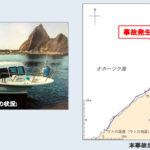UCI研究者の成果は、都市が将来の温室効果ガス排出を抑制するのに役立つ可能性があります。 UCI researchers’ results could help cities curb future greenhouse gas emissions
2022-12-14 カリフォルニア大学校アーバイン校(UCI)
“我々は、2019年と比較して2020年に約60%のCO2削減を観測し、交通の変化がパンデミックの間に化石燃料の排出を劇的に削減したことを示した “と、UCI地球システム科学科の博士課程学生で、この発見の詳細を示すAGU Advances研究の主執筆者であるシンディーヤニェス氏は言いました。”排出量は2021年7月までにパンデミック前のレベルまで回復しました。”
ヤニェス氏と彼女のチームは、UCI卒業生であるUCリバーサイドのフランチェスカ・ホプキンス教授の研究室に所属するモバイルラボを運転し、パンデミック月間に南カリフォルニアのフリーウェイを回って、CO2濃度がどう変化しているかを測定しました。
<関連情報>
- https://news.uci.edu/2022/12/14/carbon-dioxide-pollution-dropped-on-california-freeways-during-pandemic/
- https://agupubs.onlinelibrary.wiley.com/doi/10.1029/2022AV000732
COVID-19パンデミック時のカリフォルニアの都市部における化石燃料によるCO2排出量の削減量 Reductions in California’s Urban Fossil Fuel CO2 Emissions During the COVID-19 Pandemic
C. C. Yañez, F. M. Hopkins, X. Xu, J. F. Tavares, A. Welch, C. I. Czimczik
AGU Advances Published: 01 December 2022
DOI:https://doi.org/10.1029/2022AV000732

Abstract
Fossil fuel carbon dioxide (CO2) emissions (ffCO2) constitute the majority of greenhouse gas emissions and are the main determinant of global climate change. The COVID-19 pandemic caused wide-scale disruption to human activity and provided an opportunity to evaluate our capability to detect ffCO2 emission reductions. Quantifying changes in ffCO2 levels is especially challenging in cities, where climate mitigation policies are being implemented but local emissions lead to spatially and temporally complex atmospheric mixing ratios. Here, we assess ffCO2 emission patterns associated with pandemic-induced changes to human activity using direct observations of on-road CO2 mole fractions in the Los Angeles (LA) urban area and analyses of the radiocarbon (14C) content of annual grasses collected by community scientists throughout California, USA. With COVID-19 mobility restrictions in place in 2020, we observed a significant reduction in ffCO2 levels across California, especially in urban centers. In LA, on-road CO2 enhancements were 60 ± 16% lower than the corresponding period of 2019 and rebounded to pre-pandemic levels by 2021. Plant 14C analysis indicated ffCO2 reductions of 5 ± 10 ppm in 2020 relative to pre-pandemic observations in LA. However, ffCO2 emission trajectories varied substantially by region and sector as COVID-related restrictions were relaxed. Further development of these techniques could aid efforts to monitor decarbonization in cities, especially in developing countries without established CO2 monitoring infrastructure.
Key Points
- With COVID-19 restrictions, carbon dioxide (CO2) levels on Los Angeles (LA) freeways were reduced by 119 ppm (or 60%) in July 2020 relative to 2019
- Plant radiocarbon analysis captured a 5 ppm reduction in LA’ fossil fuel CO2 levels during the Stay-At-Home order
- Mobile and plant-based measurements of fossil fuel CO2 can help quantify decarbonization progress in cities
Plain Language Summary
Cities emit large amounts of greenhouse gases, especially fossil fuel-derived carbon dioxide (ffCO2), and thus contribute to climate change. Reducing ffCO2 emissions is challenging because it is difficult to quantify the many and variable ffCO2 sources of individual neighborhoods and cities. Here, we measured ffCO2 reductions during the COVID-19 pandemic, demonstrating that two measurement approaches are sensitive enough to detect changes in ffCO2 at fine spatial scales. We measured CO2 levels on Los Angeles freeways using a mobile laboratory and analyzed the radiocarbon content in plant species collected by community scientists across the state of California. Both analyses indicate substantial reductions in ffCO2 emissions in 2020 during California’s pandemic-related shift to remote work and varying degrees of emission rebounds by 2021. We found that measurements of radiocarbon in plants is particularly sensitive to local-scale changes in human activity. Our results demonstrate that measuring the radiocarbon content of plants can serve as a useful approach to quantify local changes in cities’ ffCO2 patterns and monitor decarbonization as climate agreements take effect. Further development and implementation of these methods could significantly improve our shared capacity to address climate change, particularly in cities in developing countries which often lack CO2 monitoring infrastructure.



